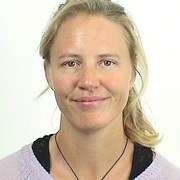REC Solar captures a large synergy effect by using their own feedstock source in their own crystallization process for multicrystalline silicon, which enables the growth of very tall ingots, thus significantly increasing the productivity of the process. The product satisfies current material specifications, but due to increasing quality requirements for tomorrow's higher efficiency cell processes, this is not expected to last. Due to an increase in the density of crystal defects towards the top of the ingot, tall ingots may be particularly challenging for high efficiency cells. However, what renders the structural defects recombination active are the impurity elements decorating them.
In the SUPERMULTI project we will therfore work to understand and change the recombination activity of structural defects, like grain boundaries and dislocation clusters, in order to make them less harmful. This can be achieved by influencing the distribution of impurity elements (dissolved/precipitated states), and by increasing the hydrogen passivation of the defects. It is important to understand how the impurity elements are distributed on different types of grain boundaries. Mapping of grain boundary types with Laue diffractometer will be conducted at Sintef and followed by lifetime characterisation of the samples, combined with modeling of recombination activity. Dedicated ingots will be grown with added impurity elements by REC Solar, as well as ingots with in-situ hydrogen during growth. Both p-type and n-type ingots will be made. The material will also be processed to solar cells (PERC type) to screen effects down to cell level. Systematic investigations of heat treatment wil be conducted on selected samples to influence the distrubution of the impurity elements and hydrogen's ability to passivate defects. In the last phase we will look into cross effects between impurity additions and hydrogen in-situ during growth and how it influences the recombination activity of the specific impurity elements.
In addition to Elkem Solar and SINTEF staff, bachelor and/or master students at NTNU will be involved in characterization as well as R&D activities in Elkem Solar's labs and production facilities.
The project is fundet by The Research Council of Norway


